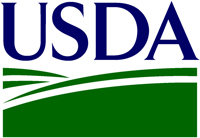 Fall is in the air and it’s harvest time for Washington apple growers. With another bumper crop expected this season many Washington tree fruit growers dream of a day when automated technology helps bring in the harvest. Manoj Karkee, assistant professor with the Center for Precision and Automated Agricultural Systems at WSU, believes that day will soon be upon us.
Fall is in the air and it’s harvest time for Washington apple growers. With another bumper crop expected this season many Washington tree fruit growers dream of a day when automated technology helps bring in the harvest. Manoj Karkee, assistant professor with the Center for Precision and Automated Agricultural Systems at WSU, believes that day will soon be upon us.
Karkee and his team of WSU scientists recently won a $548,000 USDA grant to develop tree fruit harvesting technology where robot and human work side by side. “Due to the complexity of fruit identification in an orchard environment, collaboration between human and machine is very important. This is what’s unique,” Karkee said. “When the robot can’t deliver, humans will step in and vice versa.”
When apples are in clusters or obscured by leaves and branches, a robot requires complex algorithms and long computational time to identify them. Humans, on the other hand, can very quickly identify fruits in these situations. Working together in a mobile system in the field, the fruit is identified in real time faster than by human or machine alone.
Karkee will develop specialized robotic methods to harvest fruit with consideration for things like the delicacy of the fruit and the dynamics of picking fruit by hand.








